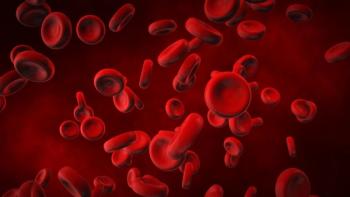
Oncology NEWS International
- Oncology NEWS International Vol 10 No 6
- Volume 10
- Issue 6
CDC Releases National Human Exposure Data on 27 Pollutants
WASHINGTON-National exposure data for 27 contaminants are detailed in the first National Report on Human Exposure to Environmental Chemicals, assembled and released by the Centers for Disease Control and Prevention (CDC). Unlike studies that estimate population exposures by measuring air, water, and soil samples, the new data represent direct measurements of chemicals in blood and urine samples. The samples were collected in 1999 as part of CDC’s periodic National Health and Nutrition Examination Survey.
WASHINGTONNational exposure data for 27 contaminants are detailed in the first National Report on Human Exposure to Environmental Chemicals, assembled and released by the Centers for Disease Control and Prevention (CDC). Unlike studies that estimate population exposures by measuring air, water, and soil samples, the new data represent direct measurements of chemicals in blood and urine samples. The samples were collected in 1999 as part of CDC’s periodic National Health and Nutrition Examination Survey.
CDC had previously assessed the population exposure of only three of the substances listed in the new reportlead, cadmium, and cotinine. Cotinine, a byproduct of the breakdown of nicotine after it enters the body, serves as a marker for a person’s exposure to tobacco smoke, either primary or secondary.
The report showed a 75% decrease in serum cotinine levels of nonsmokers in the United States, documenting "a dramatic reduction in exposure of the US population to environmental tobacco smoke since 1991," said Richard Jackson, MD, director of CDC’s National Center for Environmental Health.
Other metals covered in the report include mercury, cobalt, antimony, barium, beryllium, cesium, molybdenum, platinum, thallium, tungsten, and uranium. The pesticide data include six metabolites of organophosphate pesticides, which represent exposure to 28 pesticides. Also included are data on seven phthalate metabolites, found in many plastics.
Articles in this issue
over 24 years ago
ACS and NCCN Issue Cancer Pain Management Guidelines for Patientsover 24 years ago
Xeloda Approved for Metastatic Colorectal Cancerover 24 years ago
Walking Improves Fatigue, Sleep in Breast Cancer Patientsover 24 years ago
Bezwoda 1985 Breast Cancer Transplant Study Fraudulentover 24 years ago
Severity of Hot Flashes Worse in Breast Cancer Survivorsover 24 years ago
Tamoxifen Prevents BRCA2, But Not BRCA1, Breast Cancerover 24 years ago
High TIMP-1 Levels May Promote Prostate Cancer Growthover 24 years ago
Barriers to Colorectal Cancer Screening Among Minoritiesover 24 years ago
Epoetin Reduces Need for Red Blood Cell Transfusionsover 24 years ago
French Researchers Discover How HIV Makes First ContactNewsletter
Stay up to date on recent advances in the multidisciplinary approach to cancer.

















































































